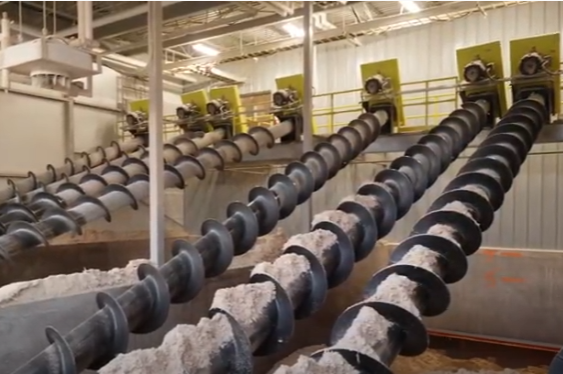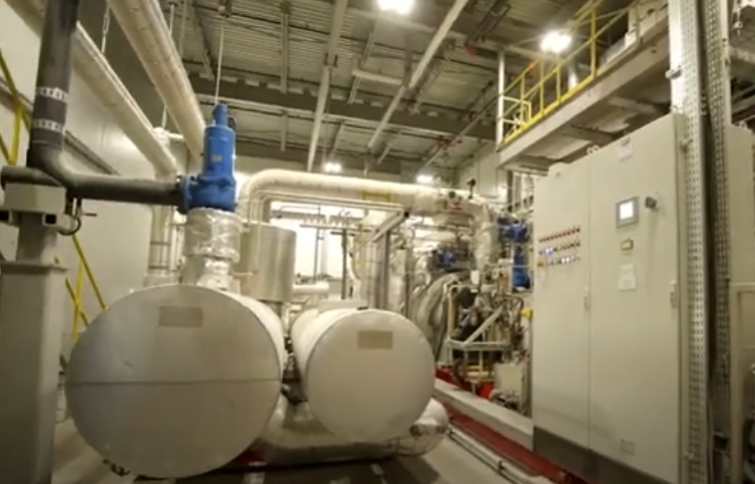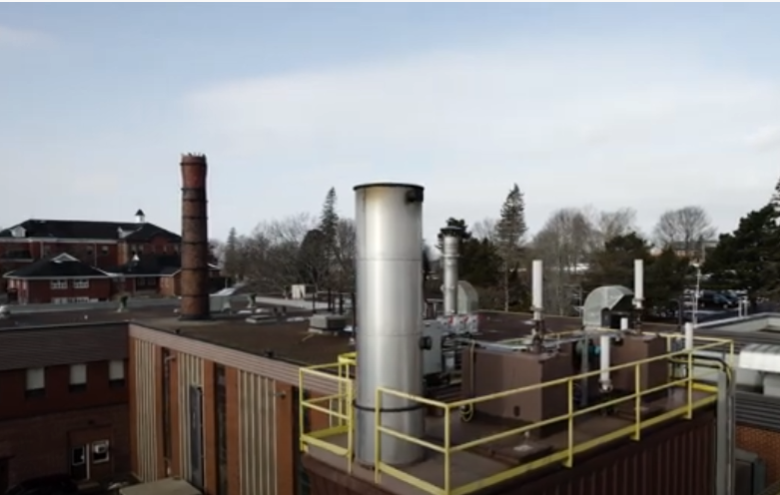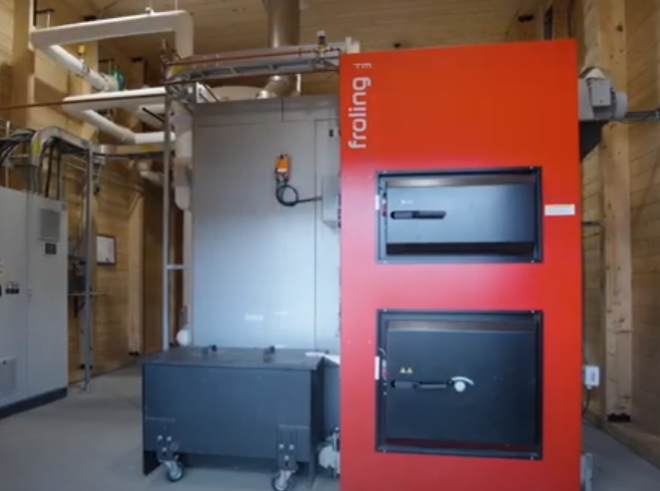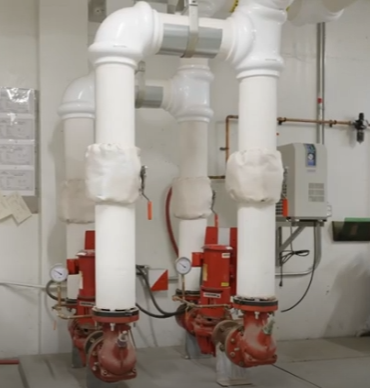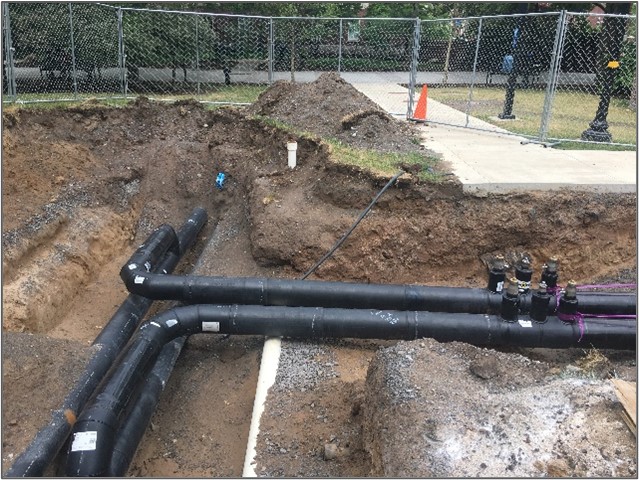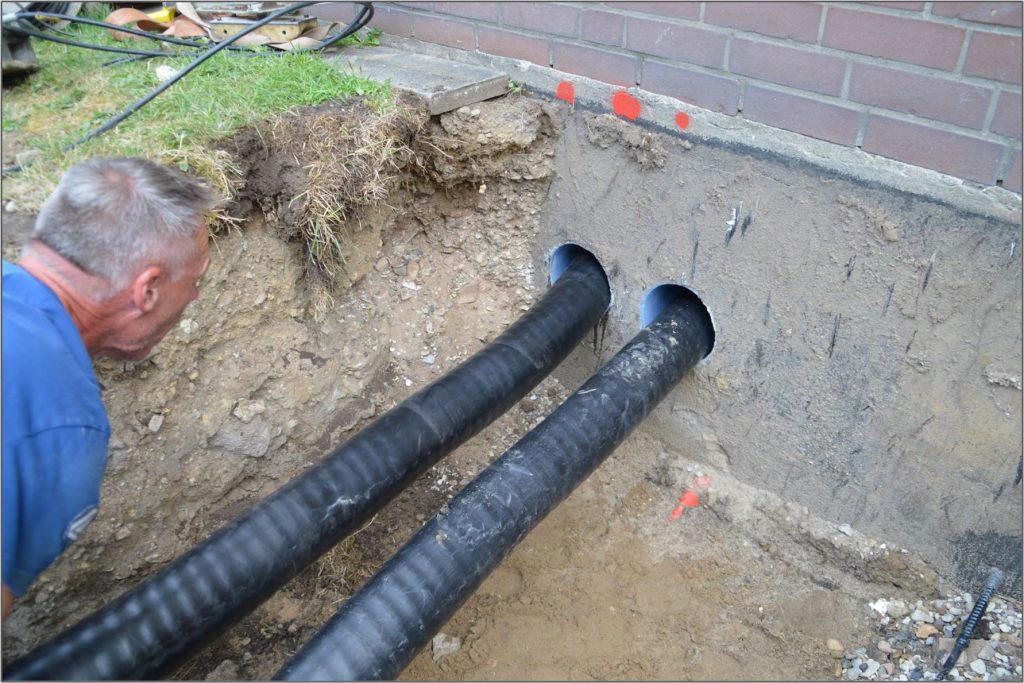Learn More
Decarbonizing with district energy
Nova Scotia has a heating problem – Building heat accounts for nearly half of all emissions in the Province, and more than half in New Glasgow. Electric air source heat pumps are promoted to reduce emissions but in Nova Scotia, 50% of electricity comes from coal plants. This means that heat pumps are less effective for reducing emissions than in other regions. Electricity rates are also expected to rise, making heating with electricity a potentially expensive alternative.
An affordable low carbon solution – New Glasgow’s district energy system will use its own local, renewable heat sources, stabilizing energy rates for customers through long term biomass fuel contracts and bringing security to the community’s energy system. The heat network will also take burden off the electricity system, complimenting the Province’s transition to renewable electricity and the electrification of other sectors.
Learn more about biomass district heat below or take a look at our FAQs
modern Bioheat
Modern bioheat systems are highly engineered, clean burning, efficient systems that provide space heat and domestic hot water for buildings or district heating networks. Modern bioheat systems are fueled with local renewable biomass in the form of wood chips or wood pellets, reducing CO2 emissions by more than 90% compared to fuel oil. Heating with local biomass creates jobs in the forest sector and enables ecological forestry by creating a market for low grade wood.
Biomass is proven as the lowest cost renewable fuel in many heating applications, supplying energy when and where it is needed.
Narrated by Jamie Stephen, Founder and Managing Director of TorchLight Bioresouces, Canada’s leading bioenergy consulting and project management firm.
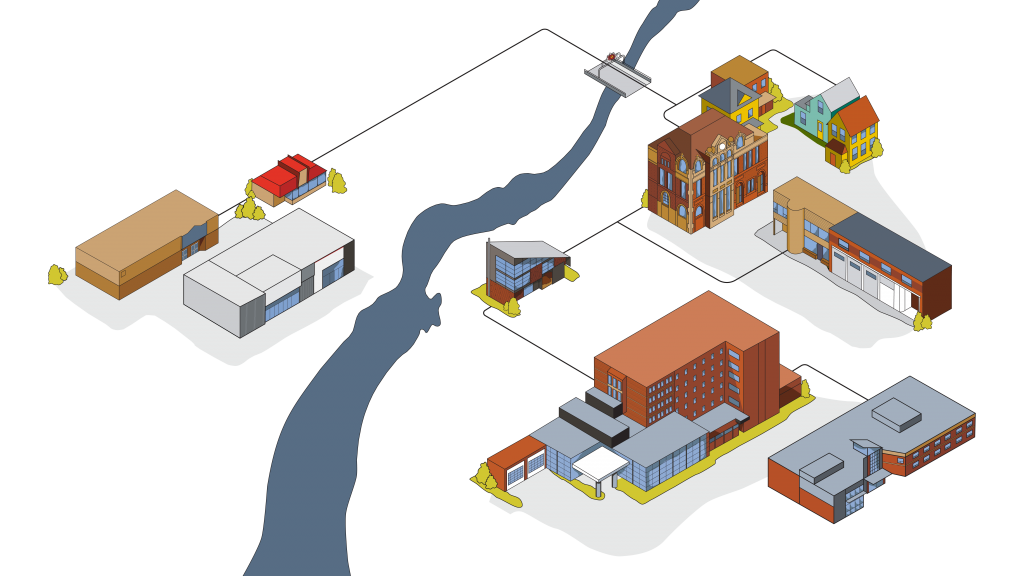
district energy
District energy systems, or heat networks, distribute thermal energy (heat) to multiple buildings in a neighbourhood. These systems consist of an energy centre, an underground network of pipes, and in-building heat exchangers that connect to existing in-building heating systems. In other northern countries district energy systems serve 50 – 90% of the population, with biomass as the most common renewable fuel. In Canada, <1% of buildings are connected to a district energy system.
District energy networks are flexible and future-proof in that any heat source can be used and new sources can be integrated over time to reduce emissions and cost.
active forest management
The ecological health of Nova Scotia’s forests can be improved through restorative, ecological forest management using partial harvest techniques and stand improvement treatments, consistent with the recommendations in the Lahey Report. Especially since the closure of Northern Pulp, the market for low-grade wood in Nova Scotia is poor, making it difficult for landowners to justify the cost of these treatments.
Municipalities are in a unique position to drive a market for low-grade wood, or biomass, at the local level through the development of efficient, community-scale biomass heating systems.
Narrated by Pat Wiggin, Executive Director of the Federation of Nova Scotia Woodlot Owners, providing forest management, support, and advocacy to private woodland owners.
Frequently Asked Questions
Biomass Supply
What Is Biomass?
Biomass used for energy includes woody residues from wood processing (sawmill residues), forest harvest or sustainable forest management activities as well as agricultural residues, organic waste streams and purpose grown energy crops. In New Glasgow, all biomass will be sourced from the forest, either from sawmills or from sustainable forest management activities and will be chipped to use in the bioenergy plant.
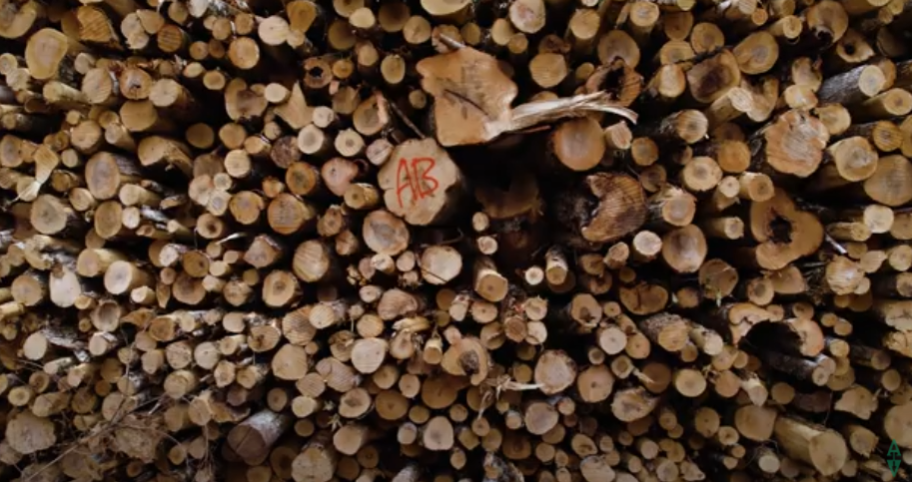

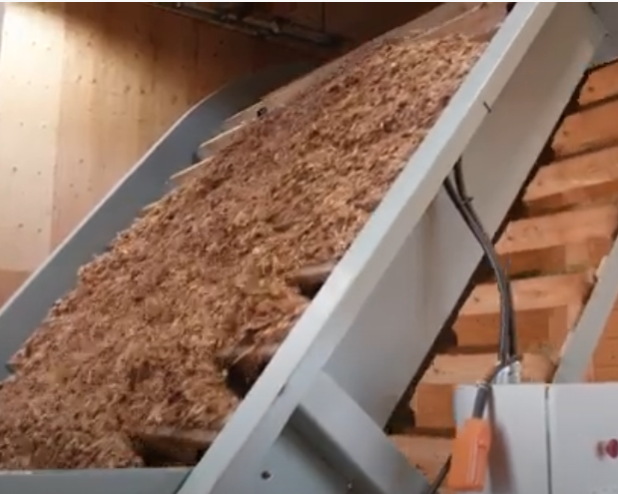
Where Will The Biomass Come From?
Biomass will be sourced from local sawmill residues and/or from sustainable harvesting operations on local private woodlots. Once the amount of biomass required to heat the community has been determined, local supply options will be assessed in terms of cost and impacts on local forests and the forest sector. TorchLight will provide recommendations on biomass supply but it ultimately is up to the system owner (either the Town of New Glasgow or a community cooperative) as to where and how biomass will be sourced. The community can specify requirements (e.g. ecological management) that fuel suppliers must meet.
How Can You Make Sure That Biomass Is Sustainably Sourced?
Should the project move forward, it is recommended that the system owner (e.g., either the Town of New Glasgow or a community cooperative) or the province outline specific sustainability requirements and biomass characteristics that must be met by all suppliers. A system to monitor and enforce the criteria should also be established. This could be a good role for existing forest owners co-operatives to play.
Is There Enough Biomass To Heat Our Town?
Yes – even if Northern Pulp reopens, there is more than enough biomass available locally to meet the heat demand of New Glasgow. When fully constructed, New Glasgow’s biomass energy system would consume between 100,000 and 200,000 tonnes of biomass annually, depending on whhether or not the biomass CHP plant produces electricity year round. To put this in perspective, Northern Pulp consumed more than 1 million tonnes of fibre annually. Even if the mill reopens, there is still an estimated 400,000 dry tonnes of biomass that would be available for a bioenergy project in Pictou County according to a previously published report here. Timber harvest in Nova Scotia has declined by about 50% since the early 2000s. 
Is Biomass Carbon Neutral?
Biomass is not carbon neutral, per se. The carbon emissions from bioenergy are not accounted for at the stack becasue they are already counted in the land use and land use change sector (LULUC) when the forest is harvested. Forest carbon fluctuates up and down and forest carbon accounting is complicated, is complicated. In short, as long as the forest resource is not depleted, emissions from biomass removals are balanced by forest growth across the landscape. If bioenergy enables more active forest management designed to restore Acadian forests, forest productivity, and therefore carbon uptake, may actually increase. The project will use carbon tracking and traceability, combined with monitoring of the fuel supply region, to ensure that there are no net GHG emissions across the supply region on an annual basis.
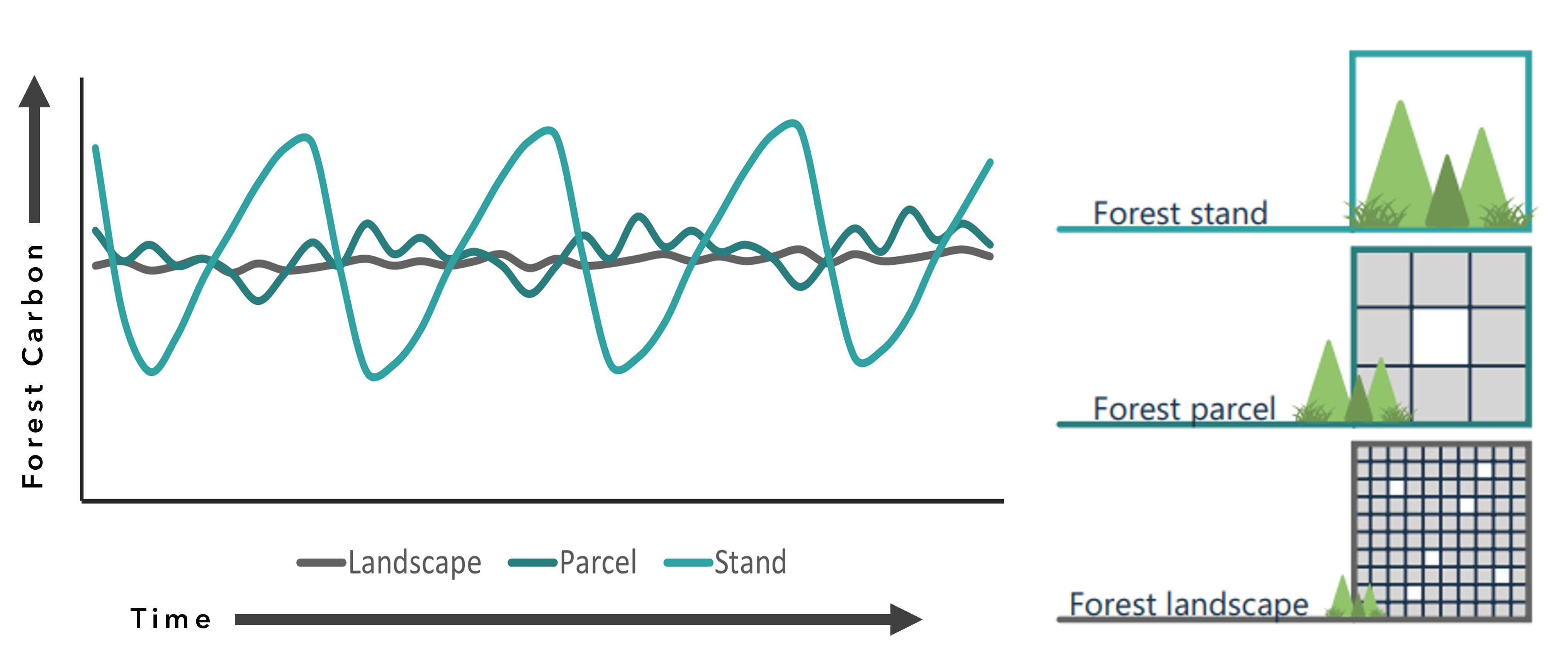
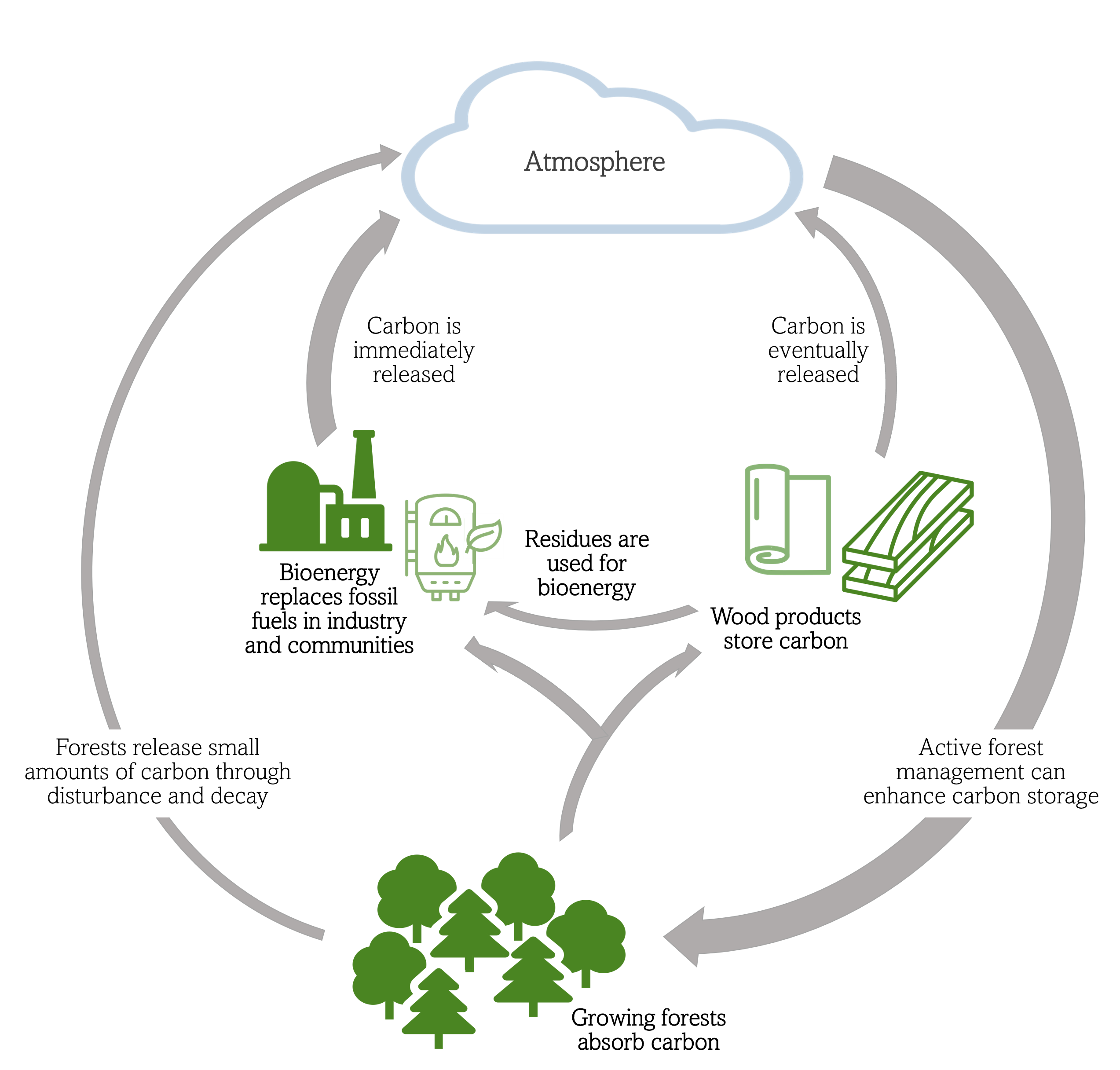
Will Truck Traffic Increase Through Town?
Yes, there will be an increase of truck traffic to fuel the biomass plant. An important part of the feasibility study will be determining the extent of this increase and working with the community to ensure delivery routes and timing cause as little disruption as possible to community members and businesses.
UPDATE: As of the end of Stage 1 of the study, a location on the east side of town, near the highway, is being considered as the preferred location for the bioenergy plant. The exact location will be determined in consultation with the Town and residents of New Glasgow.
Shouldn’t We Protect Forests Instead Of Harvesting Them?
Protection (i.e. no harvest or management) of certain forest ecosystems and habitats is important. Also important though is the supply of lumber from forests as an affordable and sustainable building material; biomass is a by-product of sustainable forest management and lumber production. Having a local market for low grade wood can help to encourage more active management by providing a market for low grade wood removed through sustainable active management. Shifting to active forest management (as described in the Lahey Report) from high production forestry (clear cutting) has even been shown to increase forest carbon and biodiversity.
If woodlot owners can profit from the sustainable management of their forests, the land is more likely to remain forested. Sustainably managed forests are protected from deforestation or conversion of land for other uses and are often made available for recreation.
District Energy System
How Will My Heating Cost Be Impacted?
The price of heat from the district energy network would be lower and more stable than the price of oil or electric heating, especially as carbon prices increase in the future. If the study finds that heat cannot be supplied from the district energy network at a lower cost than electric heat and fuel oil, the project will not move forward.
Will I Have To Pay To Connect?
At this point, it is not anticipated that residents would have to be charged a fee to connect to the district energy network. Building connection cost is included in the total capital cost estimate for the DHS. Infrastructure funding would be sought to cover 73.3% of the network capital cost, and would cover the in-building connections.
Who Will Own The System?
The district energy system could be owned by the municipality, or by a community cooperative where the customers also own the system. There are pros and cons to each model, which will be explored through the project, with input from the community.
UPDATE: Co-operative ownership is recommended to be explored as the preferred option at the end of Stage 1 of the feasibility study. Ownership and utility structures will be an important aspect of community engagement in the next stages of the project.
Why Would The Biomass Energy Plant Produce Heat And Electricity And Not Just Heat?
Biomass combined heat and power plants (CHPs) that produce both heat and electricity have a higher efficiency than heat only biomass plants, as long as the heat is utilized - in a district heat network for example. The primary reason that a biomass CHP is recommended for this project is that by co-producing electricity, and selling it through a power purchase agreement or other mechanism, the cost of heat for consumers in the network is minimized.
Will The Bioenergy Plant Increase Air Pollution?
No - Modern bioenergy plants burn very clean and efficiently and use sophisticated pollution control equipment to limit the emission of particulate matter and other pollutants to the atmosphere. The air pollutant emissions from the bioenergy plant will be roughly equivalent to that of a single wood stove and will reduce air pollution compared to the current situation where oil furnaces and boilers are used to heat individual buildings.
Wasn't Wind Power Supposed To Be A Part Of The Study?
UPDATE: The New Glasgow district heating feasibility study proposal that TorchLight submitted to Natural Resources Canada in November 2021 included a prefeasibility study on behind-the-meter wind generation to feed heat network-connected electric boilers. This was included as a potential mechanism for increasing wind power generation in the province without the need for PPAs with Nova Scotia Power. However, since the proposal was submitted, several events have occurred: 1) the Government of Canada announced the Clean Energy Regulations, which essentially necessitate the development of wind generation in Nova Scotia; 2) the Government of Nova Scotia announced a procurement for onshore wind; and 3) the Government of Nova Scotia committed to procure 5 GW of offshore wind.
With these events, Nova Scotia will face a shortage of dispatchable, low carbon electricity and may have an ‘excess’ of wind on the electricity grid. Adding behind-the-meter wind, displacing biomass CHP generation, would not aid this situation. However, adding an electric boiler or heat pump, which would use grid electricity during times of ‘oversupply’, to the heat network would provide a value energy service to the electricity grid. Therefore, the feasibility study resources intended to complete a behind-the-meter wind prefeasibility study are being reallocated to integration of grid-connected electric boilers or water-water heat pumps (e.g., river water) within the energy centre.
When Will My Home Be Connected?
Keep in mind this is just a study at this point. If the community decides that the project should move forward, the initial focus will be on the downtown area and larger buildings. The network would then be built out in phases, by zone according to the Masterplan (see Project page).
How Disruptive Will Construction Be?
The construction of a district energy network involves laying pipes underground, similar to water, sewer or buried electrical lines. Some roads and sidewalks would need to be dug up but we will work with the Town to ensure disruptions to businesses and families are as minimal as possible and that we communicate clearly when you can expect a disruption to take place.
Can I Keep My Existing Heating System?
It will be up to each building owner to decide if they want to connect to the system. If you do decide to connect, an energy transfer system (heat exchanger) would be installed in your home or building to transfer heat from the network to your existing in-building heat distribution system. You can keep your old furnace or boiler for back-up if you wish but this is not necessary. The conversion is trickier if you do not have forced air or hydronic heating but solutions for this will be assessed through the study.
Gallery

